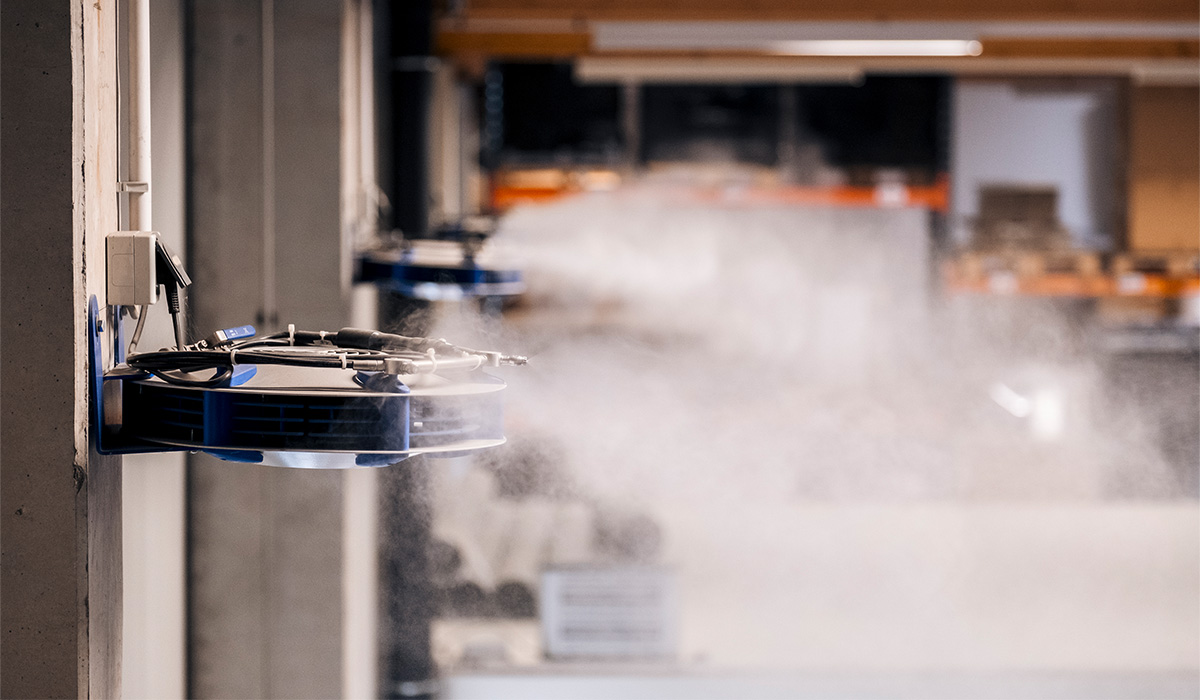Humidification for Furniture & Flooring Manufacture
Humidity Control for Flooring & Furniture
Humidity for Furniture & Flooring Manufacture
The manufacturing of furniture and flooring is a process which requires exact repeatability to make sure that the finished product, whether that be hardwood flooring, cabinets or doors and windows, are always the same in terms of dimensions, quality and appearance.

To create this consistency, it is important that the processing, manufacturing, finishing and packing of these products is done is an environment where the right humidity level is maintained.
The initial drying process of the wood makes sure the wood is in the best state to start to be cut ready for manufacture, however, from this stage on, monitoring and controlling the humidity has huge benefits. Wood is hygroscopic, meaning that it both and absorb and lose moisture, if it absorbs too much it can swell, if it absorbs too little it can dry and warp. Both these effect the wood and its process negatively, so maintaining the relative humidity at 50-60% keeps the wood in the best condition.
Our humidification systems can help do this, no matter the stage of the process, automatically adjusting to changes in the environment.
For example in wintertime, when temperatures are very low, will mean low ambient humidity, inevitably, this increases the use of heating and ventilation in the factory which draws more water from the air as the temperature increases, meaning the more water is needed to be added via the humidification system to keep the rh at the required level. Our automated controls and accurate sensors pick up on these fluctuations and adjust automatically.
Problems caused by low humidity in furniture & flooring manufacture:
- Wood dries out as it is hygroscopic and needs moisture from the air to maintain form, this makes the wood brittle and prone to cracking and warping, making production difficult and an increase in scrap rates.
- In thin layers like veneer for example, low moisture makes them prone to cracking.
- When the wood is too dry, it loses shape which means gaps appearing in joins.
Advantages of humidification in furniture & flooring manufacture:
- Helps maintain the structure, shape, and integrity of the product throughout manufacturing
- Quick payback on investment through less product waste ad reduced downtime
- Efficient and low energy solution
- Dry Fog or Micro Drop technology
- Increased profitability
- More consistent finished product
For Technical Information and Specifications,
download our PDF

Related Products and Pages


